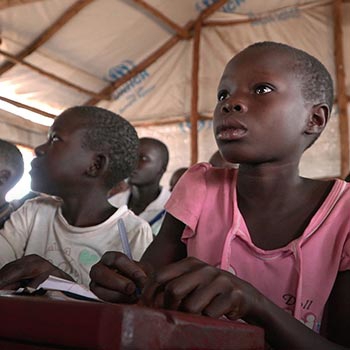Giving back to their new community
Take a walk through City Hall in Salt Lake City on any given day and you’re likely to run into Fatima Dirie.
“These are the faces of refugees in the community sharing their story,” Fatima explains while standing in front of a series of photos of newly resettled refugees who now call Utah home. “So, anyone who comes here, they know that refugees feel welcome and they are part of the city.”
A former refugee from Somalia, Fatima was resettled to Salt Lake City with her family in 1997 while still in middle school. The family escaped war back home, first finding refuge in neighboring Kenya, then ultimately finding safety and an opportunity to rebuild in Utah.
More than twenty years later, Fatima has built a career on helping empower refugees.
“I didn't have mentors, I didn't have guidance,” Fatima recalls. “It's important for me to reflect on what I didn't have and to share what I’ve learned with high school and college students.”
“I went into this work to see others grow, to see others become individuals who are contributing and giving back to their communities. For me, I feel like I'm just guiding them to that direction. It's the right thing for me to do.”





